
A key responsibility of education insitutions is to prepare young individuals for the ever changing future. In the 21st century, this has largely meant technological literacy. Being well versed in how existing technology works, and exploring the transformational possibilities of technology, is today, an essential class subject and pillar of the curriculum. Welcome to the world of AI, VR, Python, Java, and C++.
Teachers in the field of technology know how quickly things change and the blistering pace of innovation. Many of the jobs and technology tools students today will use in their future careers are likely not even invented yet. It is therefore even more vital to keep abreast of all the current technologies and understand their underlying mechanics.
With excellent teachers and curriculums, along with abundant resources, and bright, driven young people, a future tech industry leader could very well be in our midst.
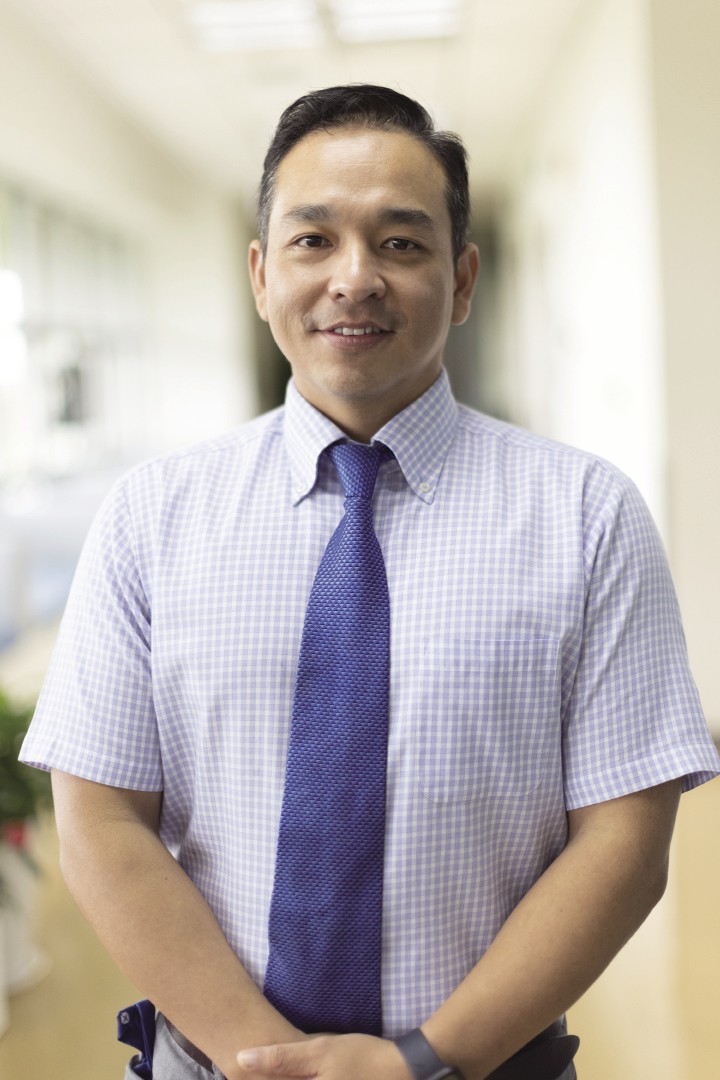
Dr Yujiro Fujiwara, Head of Applied Tech/STEM
Please describe your technology program offerings for students, is it mandatory?
Concordia recognizes the significance of technology in education and has integrated it into our curriculum, offering robotics, coding, and virtual reality classes at various levels from elementary to high school. In the early years, technology is integrated into the curriculum, with teachers using robotics to teach computational thinking skills and story-telling. Middle school students explore STEM subjects such as coding, design, and robotics. High school students have the option to take applied learning courses, science research, computer science, engineering, and big data analytics courses. While technology is embedded in the curriculum, high school students have the choice to take advantage of these offerings to enhance their learning experience. These courses help students develop essential technology skills and prepare them for the challenges of the future world.
What is the goal of the technology curriculum?
The goal of our technology curriculum is to equip global citizens with the awareness and skills to be technologically competent, thriving influencers in a technology-driven world. This means fostering experiences at school to use technology effectively, developing problem-solving skills, promoting critical thinking, and fostering creativity through innovation. Students will develop an understanding of the social and ethical implications of technology use and how it impacts society. In short, students will feel capable to choose a career path that requires a high level of technological proficiency or alternatively, regardless of the career path they choose, they will feel comfortable participating in the social issues that require technological proficiency.
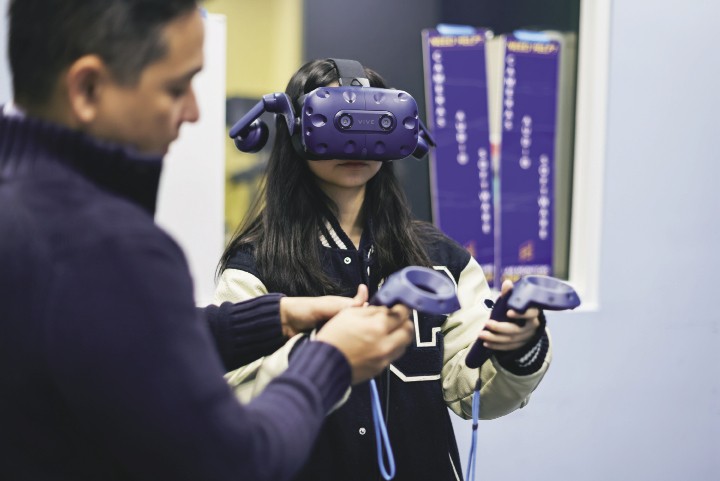
What are the biggest challenges facing the future tech industry or tech education?
We are living in a time of unprecedented technological advancements in the field of artificial intelligence. While the collaboration between humans and machines is not a new concept, we are now reaching a point where machine processing capabilities can surpass those of humans. The challenge ahead of us is to navigate a new world of enhanced machine-driven capabilities while setting clear boundaries to co-exist. As technology continues to improve exponentially, industries and education systems may struggle to keep up with the pace of advancement. The need for skilled and knowledgeable technological citizens will be greater than ever before to tackle the challenges that lie ahead. It’s an exciting time to be at the forefront of technological innovation, and the future belongs to those who can rise to the occasion and embrace this exciting new era.
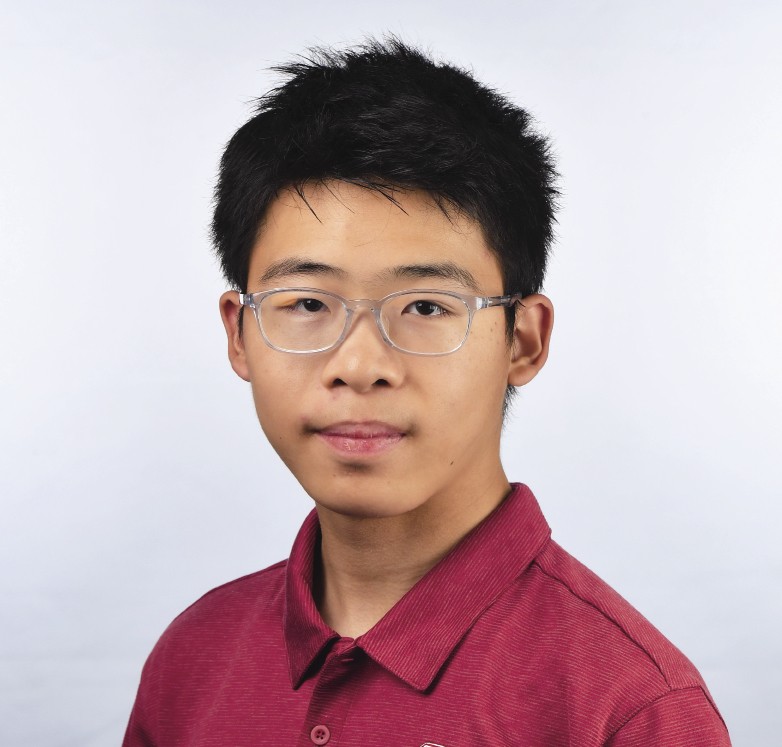
Marcus Chu,
High school sophomore, Co-founder of Phoenix Squadron drone club
Why are you interested in technology, and what are your goals for the future?
I always find myself being inquisitive about how something works, and that drives my interest in technology. I still remember when I was in 6th or 7th grade, self-driving cars were beginning to take off. Even as much as I wanted it, such advanced technology was firmly out of reach for me. Instead, I turned to robotics as a smaller-scale version of such a technological feat, something that still had difficulty and complexity, but could be achieved by that 7th-grade me. From on-the-ground robots, this interest has evolved to drones. Currently, I aim to continue pursuing my technology interests through aerial robotics. I’m also getting as many real-world experiences as I can through internship projects that will better prepare me for the future.
Describe a technology achievement of yours.
I co-founded a student club called Phoenix Squadron back in 8th grade to provide drone-related co-curricular activities for Concordia students. Since then, it has expanded beyond impacting just one division of Concordia and now has three programs spanning elementary to high school, enabling 50+ students of all grade levels to investigate topics such as First Person View (FPV) drones, autonomous drones, and drone swarm performances. Phoenix Squadron has also dazzled the entire school community by putting on drone swarm performances for school assemblies. We were most recently invited to Beijing by Damoda, the world’s leading drone swarm company, to play a role in putting on the 2023 CCTV Spring Gala show with a record-breaking 200-drones performing together with Jackie Chan.

What has been the most valuable experience in your school’s technology curriculum and offerings?
It would definitely be the power of passion, and the unwavering support of my mentor Dr Peter Tong and the Concordia school administration. Since the beginning, Dr Tong has always encouraged me to pursue a passion without boundaries no matter how ambitious it might be. That encouragement made Phoenix Squadron’s first Aerospace CCA program possible, and is the driving force behind its continued advancements. In the summer of 2020, Dr Tong traveled with us to Shenzhen to visit Damoda, our first real-world experience in the drone swarm industry. The school saw drones as a STEM learning platform for students, and has provided continuous support and enabled Phoenix Squadron to bring to fruition a longstanding dream, bringing large-scale drone performances to Concordia.
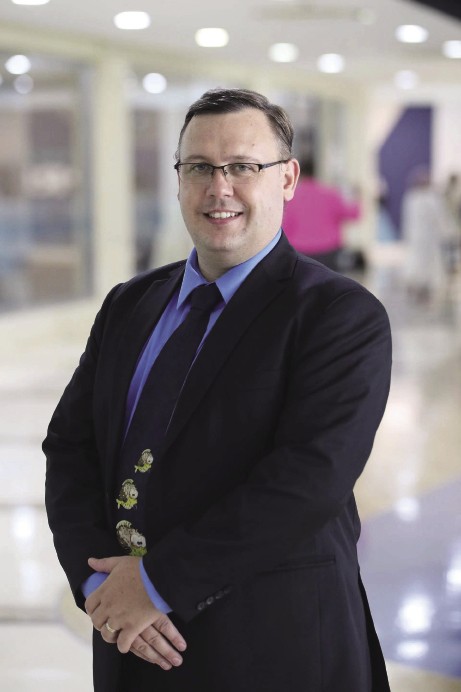
Nathaniel Brown, Head of Computer Science & STEAM
Please describe your technology program offerings for students, is it mandatory?
At BISS, all students in Years 7, 8 and 9 learn how to do 3-D modelling in Virtual Reality. Year 7 students learn how to use ScultrVR to do 3-D modelling and Year 9 students learn how to use Gravity Sketch which is more advanced. The models they create are then printed on the school’s 3-D printers. This is done in collaboration with the Chinese Department as students make 3-D models of the current Chinese New Year animal. Year 8 is a bit different as the students use Arkio to try to recreate the school from the blueprints. This is to teach different skills and also keep it fresh.
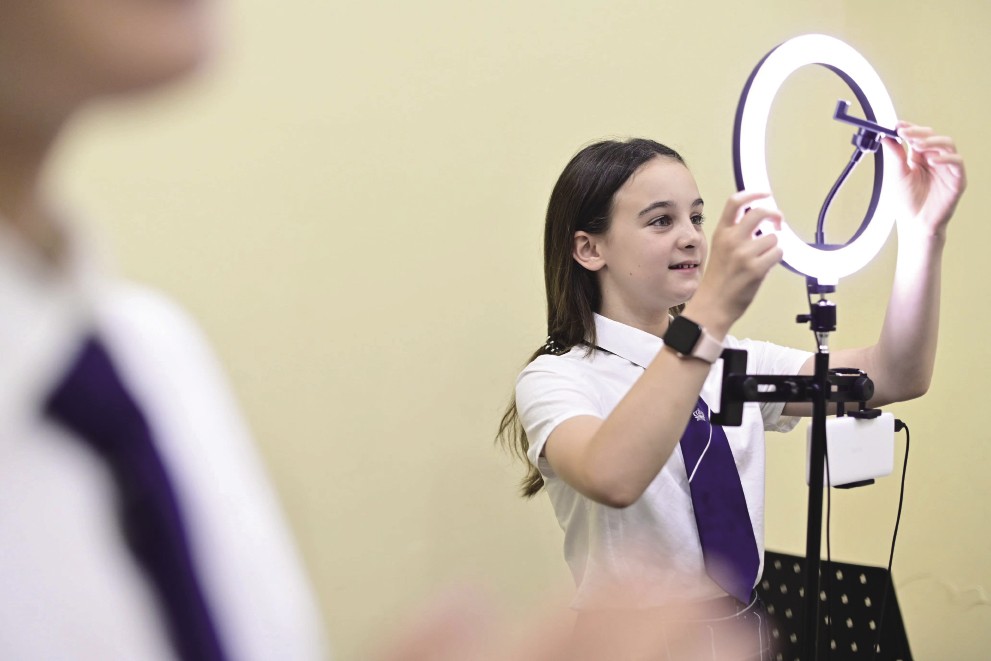
What is the goal of the technology curriculum?
The goal of the technology curriculum is multifaceted:
• Expose students to new technology that they may not have experienced before.
• Teach students how to use Virtual Reality.
• Teach students about 3-D modelling.
• Teach students to learn how to use new software.
• Teach students to think in three dimensions.
• Teach spatial relationships between different parts of the animal.
• Teach about different file formats.
• Teach problem solving.
• Teach creativity.
• Teach critical thinking.
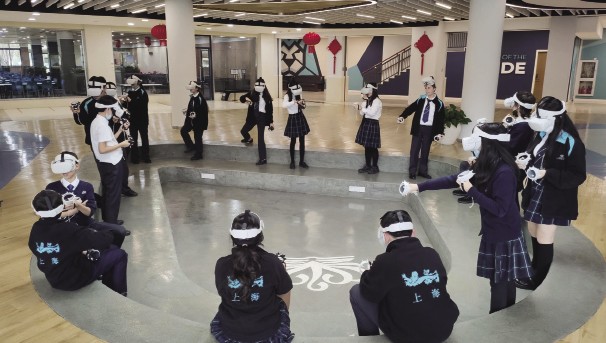
What are the biggest challenges facing the future tech industry or tech education?
The biggest challenge facing the future of the tech industry is the acceleration of change and it is hard to get noticed. You might have an amazing solution for people, but it doesn’t help them or your product if they don’t know that it exists.
The problem for tech education is similar. There are too many options and there is a fixed amount of time. Teachers need to decide what to teach and what to skip. The skills can be learned in multiple different ways and in the end, it isn’t possible or desirable to learn everything. There is also no way to know what will be important in the future and what will be redundant. Though some things are obvious like helping students to learn “how to learn”.

Troy Harkin, Head of Middle School Design Tech and Visual Arts and High School Design Tech Teacher
Please describe your technology program offerings for students, is it mandatory?
The Design Technology program at Shanghai American School’s Pudong campus offers five different courses, three in middle school and two in high school. Grade 6 students all take a semester of Design Tech. In Middle School overall, students learn about design as a process and how it’s applied to create solutions using foundational skills in fabrication, computer-aided design, computer science, and robotics. They also learn how to use a variety of digital and physical tools to bring their ideas to life.
In High School, students can take courses in Electrical & Mechanical Design and Engineering & Robotics, where they blend different design processes together while learning about electrical and mechanical systems, as well as engineering principles applied to robotics. SAS offers these courses to help students develop in-demand skills that can launch countless future opportunities. SAS also provides technology tools to enhance learning and make it more personalized, collaborative, and relevant.
What is the goal of the technology curriculum?
Design Tech at SAS is a program that aims to empower students to generate a wide range of ideas and use their expanded skill sets to bring solutions to life. The program emphasizes the importance of design thinking, which is a process that centers around applying creativity and innovation to problem-solving. By incorporating design thinking into the curriculum, students can enhance
their problem-solving skills and become more effective learners. Design and Technology can play a key role in helping students develop problem-solving skills, design thinking processes, and the dispositions needed to become resilient, optimistic, and innovative members of the workforce and society.
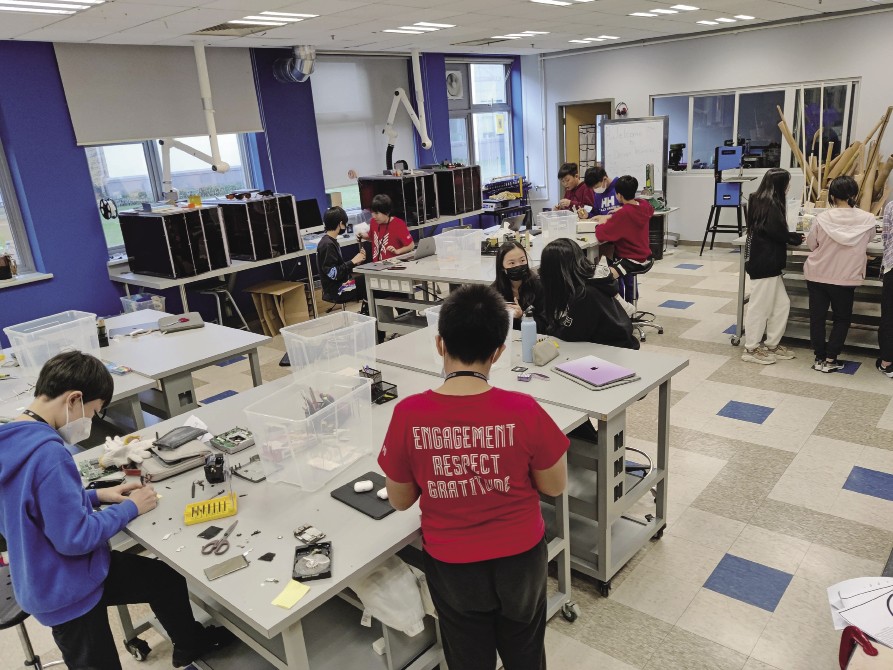
What are the biggest challenges facing the future tech industry or tech education?
The challenges of the future tech industry, or with advancements in technology in education, will always be there. These challenges have existed since before computers were used in schools. The technology landscape continues to change rapidly, and with these changes, there is always a need and opportunity for educators and students to be flexible and adaptable to what is to come. We have recently started exploring AI and want to expand our offerings in VR as additional tools that students can use to help create solutions and demonstrate their learning. As long as we can adapt, we can overcome these challenges, and students will continue to be empowered.
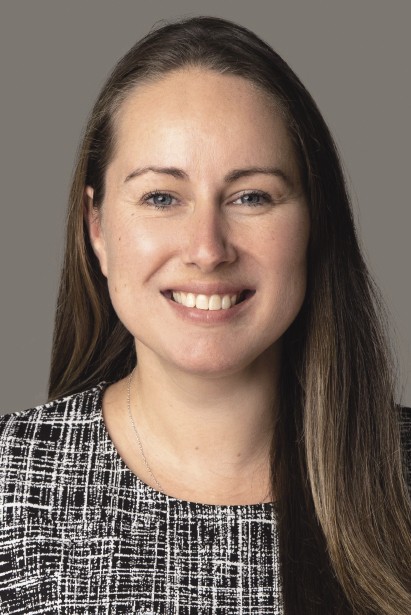
Dr Ella Yankelevich, Co-Director of Educational Technology
Please describe your technology program offerings for students, is it mandatory?
Dulwich College Shanghai Pudong begins developing students’ Digital Intelligence from the start of their learning journey. Students in Nursery and Reception engage with interactive displays, robotics, digital storytelling, and digital portfolios. Beginning in Year 1, students begin a formal technology curriculum that covers Digital Citizenship, Design Thinking, Computational Thinking, Robotics, and Digital Media Literacy. Additionally, Senior School students participate in Computer Science courses in addition to developing their Digital Intelligence in all coursework. Beyond the formal curriculum, students are engaged with technology in Co-Curricular Activities, assemblies, and special events. Most recently, six schools around China joined DCSPD students in our annual Hackathon, HakD which challenges students to innovate to solve a real-world problem by leveraging technology.
What is the goal of the technology curriculum?
The goal of Dulwich College Shanghai Pudong’s technology curriculum is to develop students who are Worldwise and Digitally Intelligent. We aim to provide students with the necessary skills and knowledge to use technology effectively and responsibly. Technology has become an integral part of our lives and it is important for students to learn how to use it to communicate, collaborate, create, and solve problems. Our technology curriculum covers a range of topics including computer skills, programming, robotics, digital media, and digital citizenship. The curriculum provides students with opportunities to engage in activities and projects that allow them to apply their learning in real-world contexts. Overall, the goal of our technology curriculum is to prepare students for the digital age and to equip them with the skills and knowledge they need to thrive in a rapidly changing technological landscape.
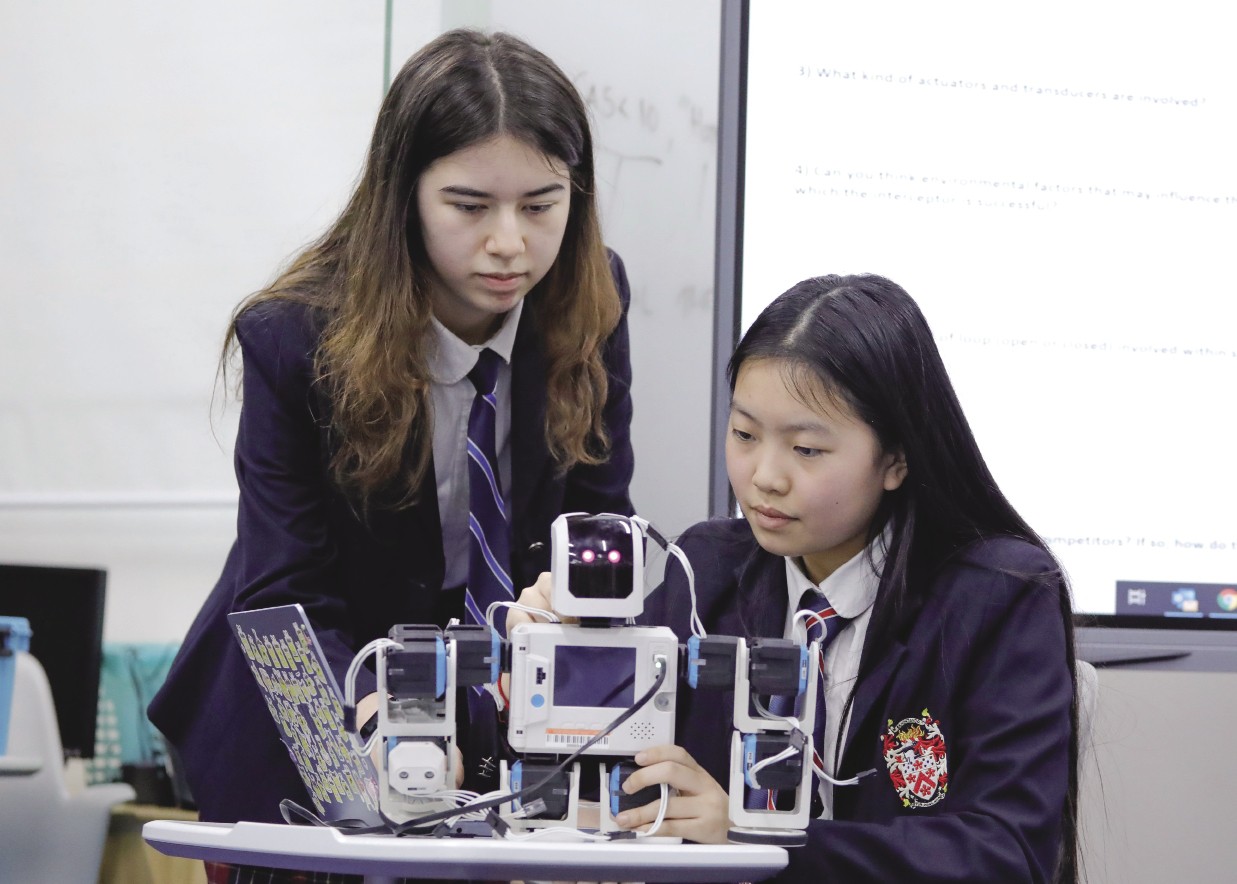
What are the biggest challenges facing the future tech industry or tech education?
Technology is advancing at a rapid pace, and it can be challenging for educators to keep up with the latest developments. We cannot remain stagnant when it comes to technology in education. Curriculums must be continually updated, consistent teacher professional development is crucial, and an eye must always be kept on emerging tech. Digital Citizenship regarding safe, ethical, and fair use is always a concern whether it be students’ mental health with social media use or academic honesty with the use of Artificial Intelligence. Preparing students for life after graduation requires preparing them to deal with the way artificial intelligence and automation is transforming the job market. There is a need for individuals who can adapt to these changes, develop new skills, navigate complex ethical issues, and ensure that technology is used for the benefit of society.